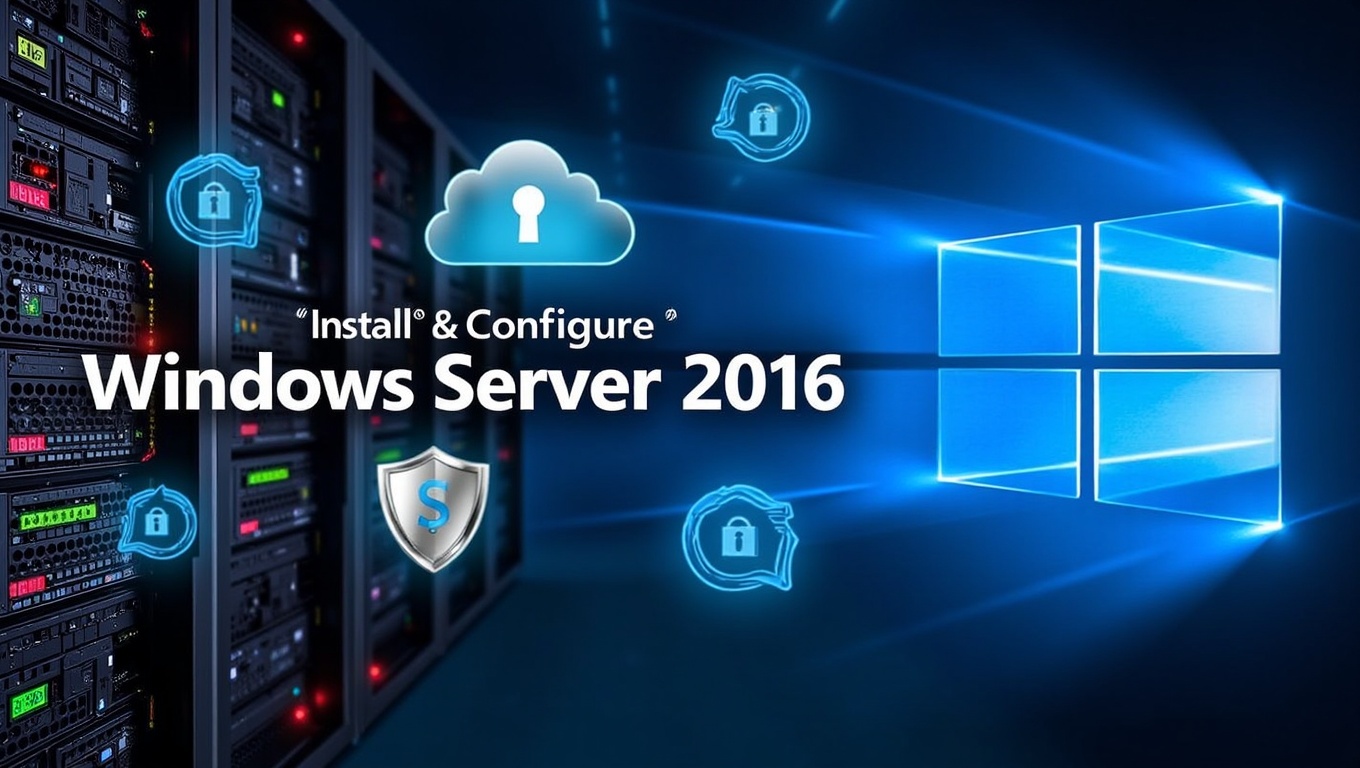A Beginner’s Guide to Windows Server 2016 - From Installation to Domain Management
Introduction to Windows Server 2016
Windows Server is a family of operating systems designed by Microsoft to support enterprise-level management,data storage, applications, and communications. Over the years, Microsoft has introduced improvements focused on enhancing stability, security, and networking. Windows Server 2016, the eighth release, continues this tradition while being cloud-ready, allowing organizations to smoothly transition to cloud computing environments.
Windows Server provides enhanced layers of security, enabling organizations to efficiently manage users, devices, and applications while preventing potential attacks. This version not only helps mitigate the damage in case of an attack but also enhances the ability to detect suspicious activity
Step-by-Step Guide to Installing Windows Server 2016
Prerequisites Before proceeding with the installation, ensure you have the following prerequisites in place:
- A physical server or Virtual Machine (VM) with Windows Server 2016 installed.
- A static IP address assigned to the server.
- DNS settings configured with the same IP address for integration with Active Directory.
Step 1: Installing Active Directory Domain Services (ADDS)
Log in to your Windows Server 2016 using administrative credentials. Once logged in, follow these steps:
- Open Server Manager.
- Navigate to the Dashboard.
- Click on Add roles and features.
This will begin the process of installing the Active Directory Domain Services (ADDS), which is essential for managing domains, users, and permissions.
Step 2: Promoting the Server to a Domain Controller
After the ADDS role is installed, promote the server to a Domain Controller by selecting Promote this server to a Domain Controller. This can be accessed either through a notification flag next to the Manage menu or from the ADDS installation completion window.
During this process, the Prerequisites Check will ensure all requirements are met. Once successfully completed,click Install. After the installation, reboot the server.
Step 3: Verifying Domain Controller Installation
Upon reboot, log in with your domain admin credentials. Your local admin account will be automatically promoted to Domain Admin. You can now verify the configurations by accessing tools like:
- Active Directory Users and Computers
- Active Directory Domains and Trusts
These tools can be found under Administrative Tools in the Start menu.
Creating a New Forest
In Windows Server, a Forest represents the company or organization, and it houses users, groups, and other objects. Here’s how to create a forest:
- Enter a name for the forest (e.g., XYZ.net).
- Follow the steps to configure the forest and domain names.
- Click Finish to complete the process.
The forest will now act as the foundation for managing your company’s infrastructure.
Managing Active Directory Services
Windows Server 2016 comes with several built-in services that aid in efficient management. Some of the core services include:
- Active Directory Domain Services (ADDS): Manages the directory for storing information about users and resources in a network.
- Internet Information Services (IIS): A web server for hosting websites.
- Domain Name Server (DNS): Provides IP address translation services for domain names.
- File and Storage Services: Manages file shares and storage volumes.
Adding Users to the Active Directory
You can add users based on their roles and assign specific permissions. Common roles in an organization include:
- Product Leader
- Graphics Designer
- HR/Finance/Admin
- Advertisement Assistance
- DesktopOS Developer
- B2B Assistant
- SEO Specialist
By categorizing users into specific roles, you can streamline access control and ensure each employee has the permissions needed for their job function.
Tools -> Option -> Active Directory Users And Computers
Configuring User Login and Security
To enhance security, Windows Server 2016 allows admins to set user login hours. This ensures that users cannot access the server outside of working hours,reducing the risk of unauthorized access. Additionally, admins can set account expiration dates and configure local login permissions.
The users were provided the login hours so to ensure that they can’taccess the server or client pc in other than working hours and will also ensure any un authorised access which ensure client and database security
The client account expiry set according to access token to acces in time to access the clients system users can login in the working of office time . Then Set Local Login Permission In order to Access the System Of The Client
Providing the Users Permissions to Access Needed The credentials provided By the Admins The Servers Provide Additional Security to the users if login .
Providing Access to the Users
Client PCs can also be added to the domain (e.g., XYZ.net), acting as access points for users. Each user must provide the credentials assigned by the administrator to log into the domain.
Conclusion
Windows Server 2016 offers a highly secure and efficient platform for managing enterprise operations. With its cloud readiness, layered security features, and robust tools like Active Directory, it’s no surprise that organizations across the globe rely on it for client server interaction. By following the steps outlined in this guide, you can set up and manage your server with ease, ensuring your company’s IT infrastructure is both secure and scalable.
References:
